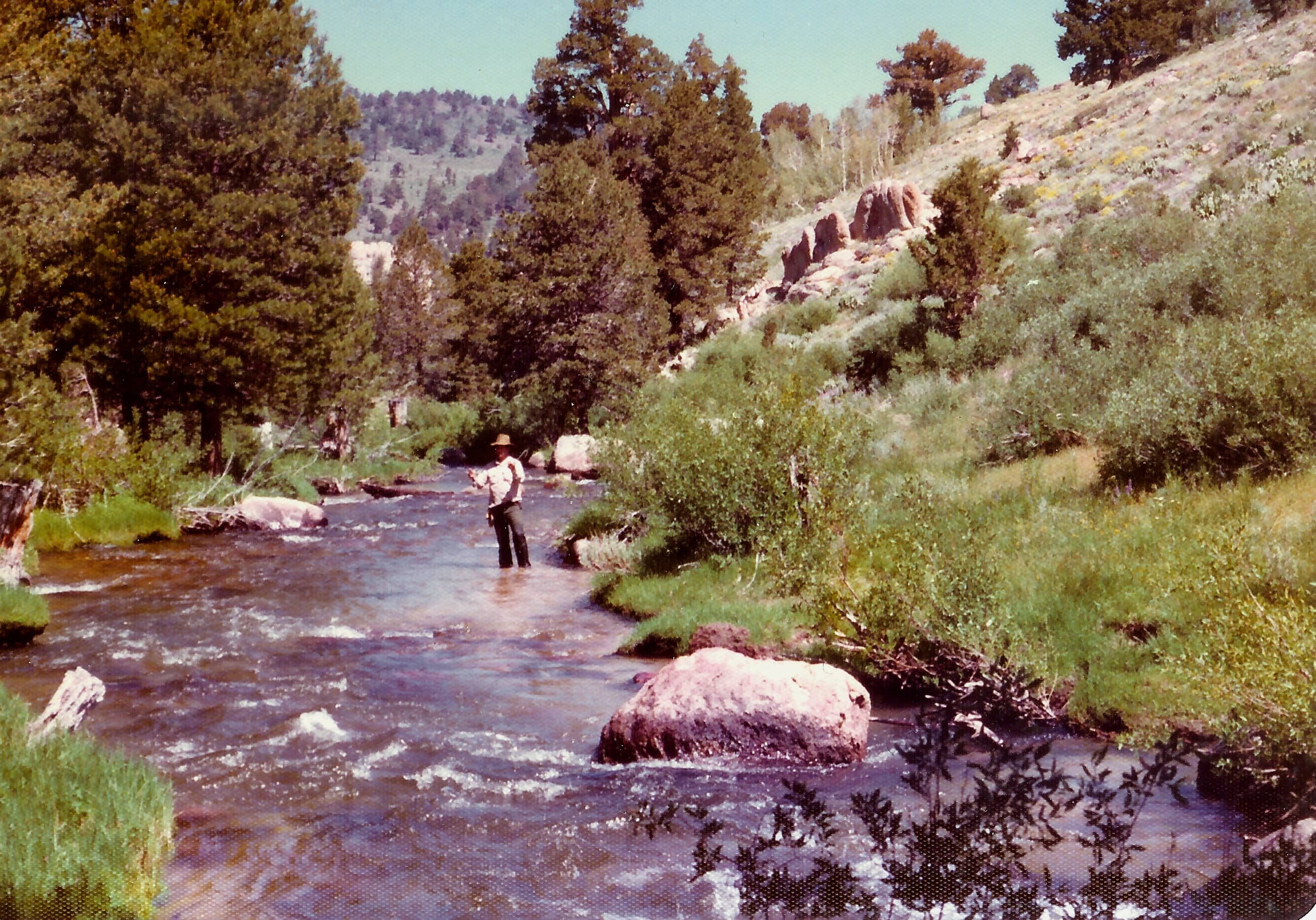Fishing for Magical Trout from Seasonal Streams
Don Moyer 09.20.12

As far back as I can remember, I have been a stream fisher. While there’s no doubt that the largest fish always come from lakes and big brawling rivers, there is something magical to me about moving water in a knee-deep stream. Ordinarily the price you pay to be a stream fisher is that you rarely catch really big fish.
Fortunately, there is an exception to the “Big Water-Big Fish” rule. The exception is seasonal streams. Heck, I didn’t even know what seasonal streams were until I discovered my first one by accident. One spring, my dad and I were on our way up to fish the Merced River in Yosemite National Park. As we drove past one of the large foothill reservoirs, we noticed a nice-looking stream flowing down the mountain into the lake. “Boy, that looks like good trout water,” I observed to my Dad. He explained that even though it looked good, there were no trout in it because it went completely dry in late summer every year. Seasonal streams are essentially seasonal streams that flow in the winter and spring and then dry up in summer and fall. For decades I figured that there couldn’t possibly be fish in a stream that is bone-dry for four or five months out of the year.
That particular trip, however, something told me to stop and check out the pretty little stream that went dry every year. Despite some growling and grumbling on the part of dad, we hiked about 10 minutes down to the creek and rigged up our fly rods. Dad got his fly in the water first and on the first cast hooked solidly into an 18-inch trout! Soon I had his twin sister hooked as well. My thinking changed that day when I accidentally discovered that a stream that was bone-dry in August could be flowing nicely in March and April. To top it off, the average size of its trout was between 18 and 20 inches! I still have difficulty getting used to the idea that you can catch giant trout in a knee-deep creek. After you’ve caught four or five trout over 20 inches it begins to make a believer out of you.
I did a little checking with fisheries biologists from the California Department of Fish and Game and discovered that vanishing stream trout were rainbows that ran upstream from their home reservoir to spawn in the tributary creeks. The giant spawners would lay their eggs in the birght stream gravel and then drift back downstream to the lake after spawning. The little trout fry would stay in the protective waters of the stream until the waters of the creek began to warm up in early summer. Then the little trout would follow their parents back to the lake.
There are a couple quirks to fishing for these trout. First, they’re sort of like steelhead, sometimes the fish are there, and sometimes there not. When they’re up out of the reservoir and in the creek, the fishing is great. If they’ve not yet begun their spawning run or if they have already headed back to the lake, you can fish all day and catch nothing. Probably the single most important thing to remember is that these are spawning trout and that you should release almost all of them so that they can reproduce and a great fishery will remain great for years to come.
Don’t get me wrong, I love to eat a mess of brook trout from a high mountain stream, or a baked trout almondine from one of the reservoirs. If you want to keep a single giant trout that’s over two feet long for the taxidermist, that’s great. But just take a few quick measurements and some photos, then release your trophy to spawn again. A good taxidermist can make a great mount for you and you’ll have the satisfaction of knowing you released a giant trout! Remember, if a rancher regularly killed his biggest cattle for food and left the little ones to breed, pretty soon the herd would be stunted. Catch and release is more than just a code of ethics, it’s good common sense as well.
If you want to try a vanishing stream for giant trout, watch the weather for several days of heavy rain followed by ten consecutive days without rain. That will give the high water a chance to calm down and most of the murkiness to settle out. With any luck, you may catch the biggest stream trout of your life. Another likely spot for vanishing streams is to check out desert reservoirs in winter and spring for seemingly dead streams that enter them. Make sure you check your local fishing regulations so you don’t run afoul of the law.
Another word of advice, on a warm spring day in the foothills or the desert, be sure to keep a close eye out for rattlers. Several years ago, I had a really close call with a big diamondback, and even worse was that I was so startled that I swore profusely right in front of my minister. Boy was I embarrassed! I don’t know about you but I’m counting the sunny days until the vanishing streams magically appear.

